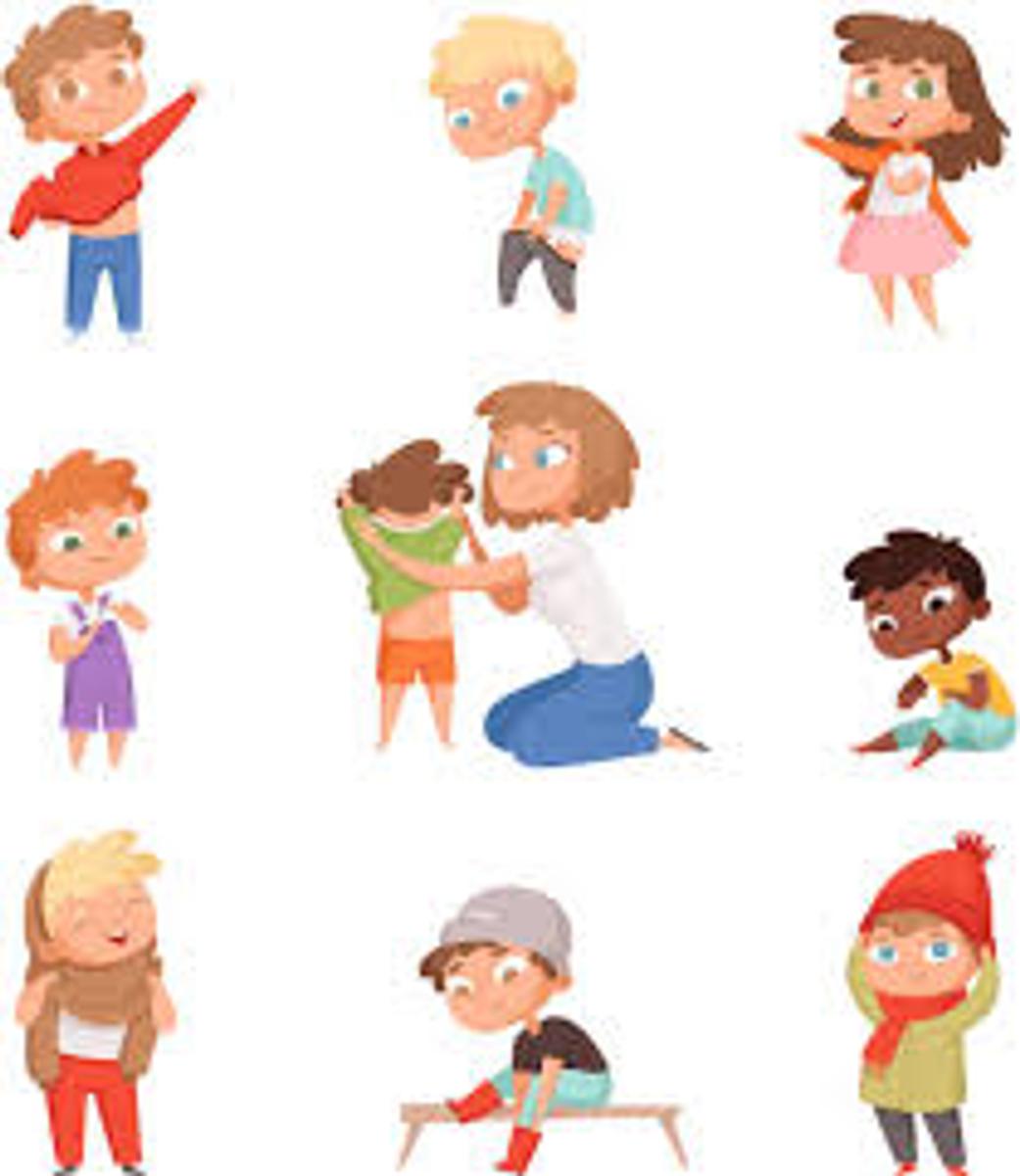Therapy

Occupational Therapy Advice
Dressing and undressing
- To develop dressing and undressing skills it is advisable to start with establishing a routine.
- Each time you carry out dressing and undressing tasks, try to do them in the same way so that your child will be able to predict the sequence of steps.
- When dressing and undressing describe what you are doing and what you would like your child to do. For example ‘now I am putting your sock on your foot’, ‘I am putting your T-shirt over your head’, ‘can you push your arm through the sleeve’.
- Give you and your child time when practising dressing and undressing. There are times in day when this is not possible such as in the morning before school. Try to find a time during the day when there is adequate time, for example at bath time, bedtime or weekends.
- Ensure that your child’s clothes are loose rather than tight, as it is more difficult to dress and undress tight clothes.
- Practice dressing skills on toys and others, for example your child can practice fastenings on your self, dolls, bears etc.
- As your child becomes more co-operative with dressing and undressing and they learn a few skills, give a little more time so that they can anticipate what is going to happen and they can participate. For example 1- pause as you put their T-shirt on their head so that they bring their hands up to the T-shirt and pull it over their head, 2- when you place your child’s hand in the sleeve hole, pause to give your child time to push their arm through the sleeve.
- Play dressing up games.
- As your child participates and carries out dressing tasks, give your child praise and recognition for what they are doing.
Other useful techniques:
- Backward chaining – this is a useful method that gives your child a sense of achievement when dressing. The idea is that your child completes the last part of the dressing task, so that they get the reward of completing the task. As their skills develop they can carry out more of the task, until they are able to carry out the whole of the task. For example: Socks – place the sock on your child’s foot and encourage them to pull the sock up their leg. Next they pull the sock over their heel and up their leg, then they pull the sock over their foot and heel and up their leg. Carry on giving your child encouragement and opportunities to practice until they are able to complete the task.
- Modifying clothing – this can be useful so that your child is able to dress themselves independently and more quickly. Examples:
- Velcro fastenings for shoes.
- Elasticated waist trousers.
- Polo shirt rather than school shirt.
- School shirt - you can sew Velcro on the seam where the buttons are, so that your child can put their shirt on and fasten it using the Velcro rather than buttons. You can also sew the buttons on the outside of the shirt so that it looks as though there are buttons.
- Sewing a coloured label in the back of clothes so that your child has a visual clue to indicate the back of a garment.
- Socks with coloured heels.
- Large buttons with large holes in a soft / stretchy material.
- Add a loop of ribbon to zippers to facilitate grasp.
Wellbeing Information
Annual Christmas Hampers again this year.
Frankston families are able to get a free xmas hamper . All you need to do is call us before Tuesday 21st November on 9783 7284 and request a family hamper. You do not have to have used our service before to be eligible. Just ring our friendly reception volunteers and they will explain the process.
There is just a couple of rules for family hampers -
* Must have child/children under the age of 18 years to be eligible
* Must live within the Frankston municipal boundary
* Must be able to collect their family hamper on Thursday 12 December 2024 (only day available - between 9.30am-11.30am from the High Street Uniting Church, 16-18 High Street, Frankston

